“Up Close and Personal with Cheetahs in South Africa”

”There are no free-roaming wild animals like Cheetah left in South Africa,” I am told. “They are all on reserves.”
What?
I’ve seen elephants foraging through bushes, giraffes reaching up into treetops, buffalo bathing in a lake, and lions napping after they’ve eaten their fill. They are wild. Springbok and Wildebeest race away when we approach. My confusion gives way to understanding: All of them are kept on huge fenced-in game reserves.
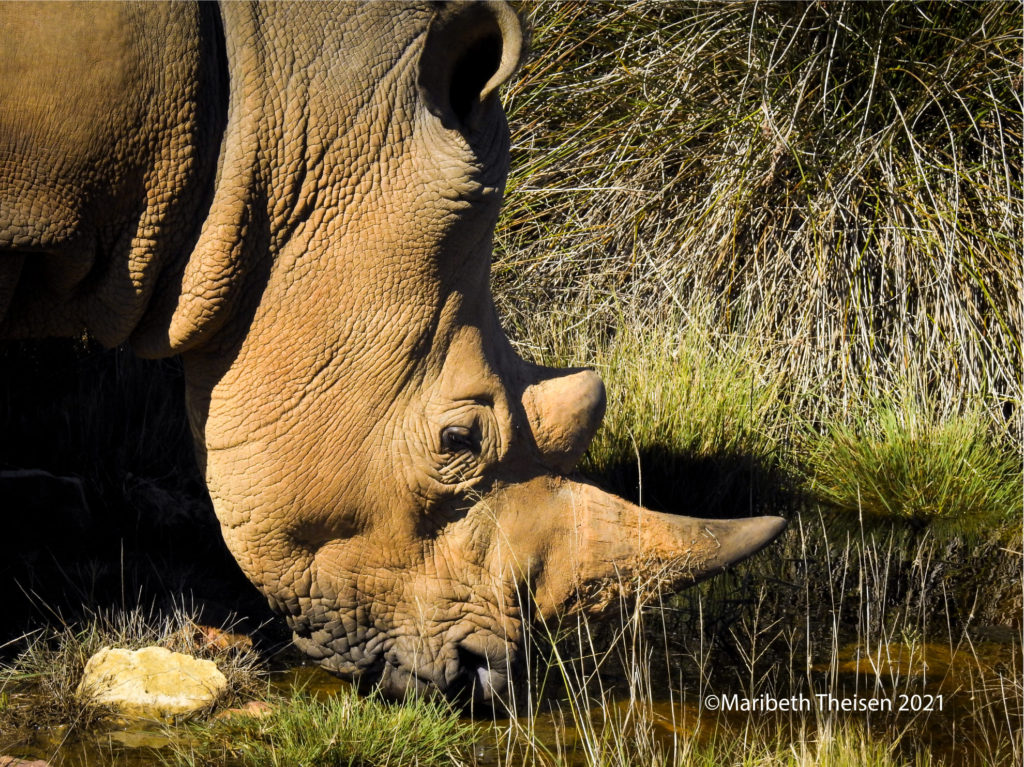
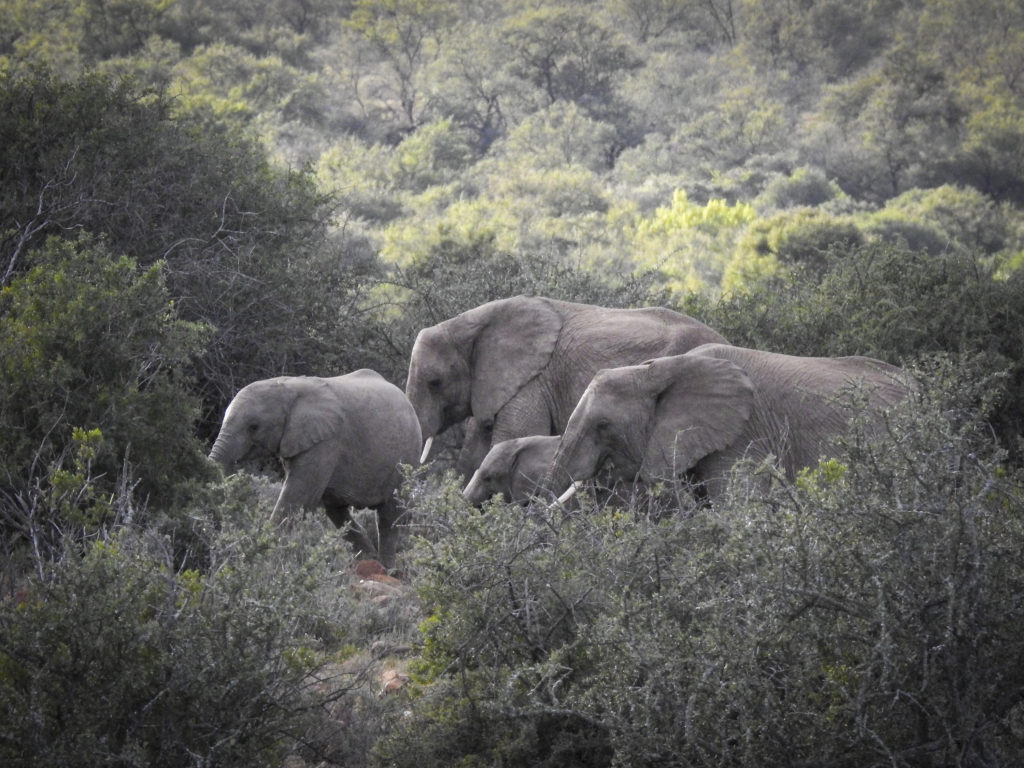
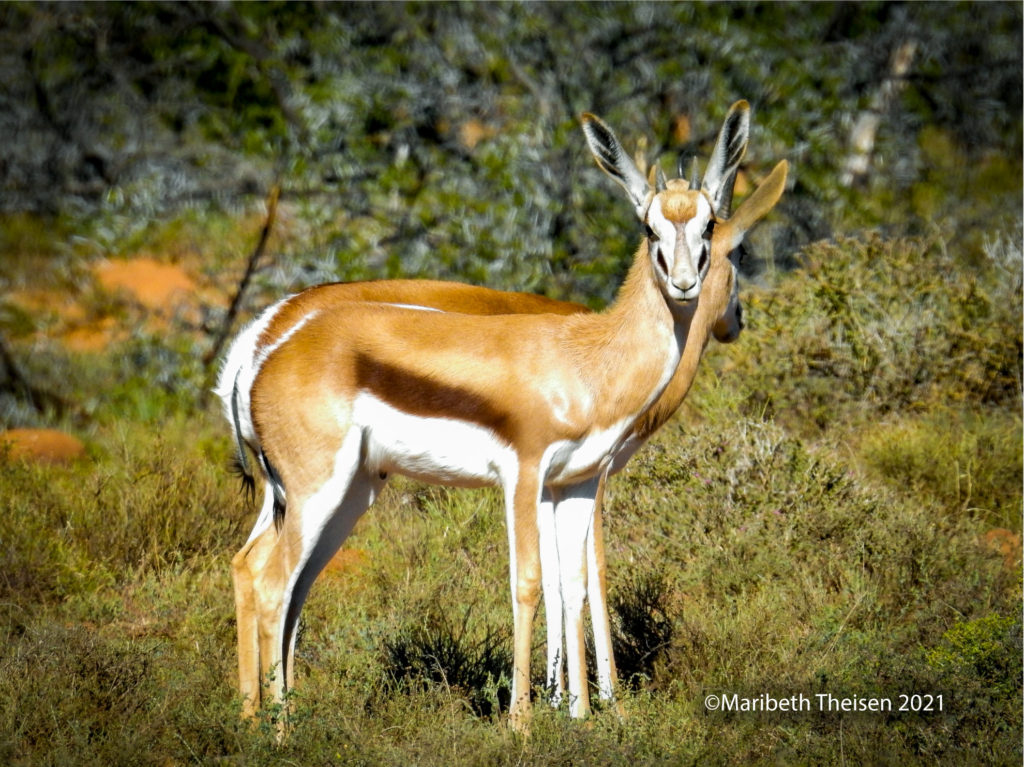
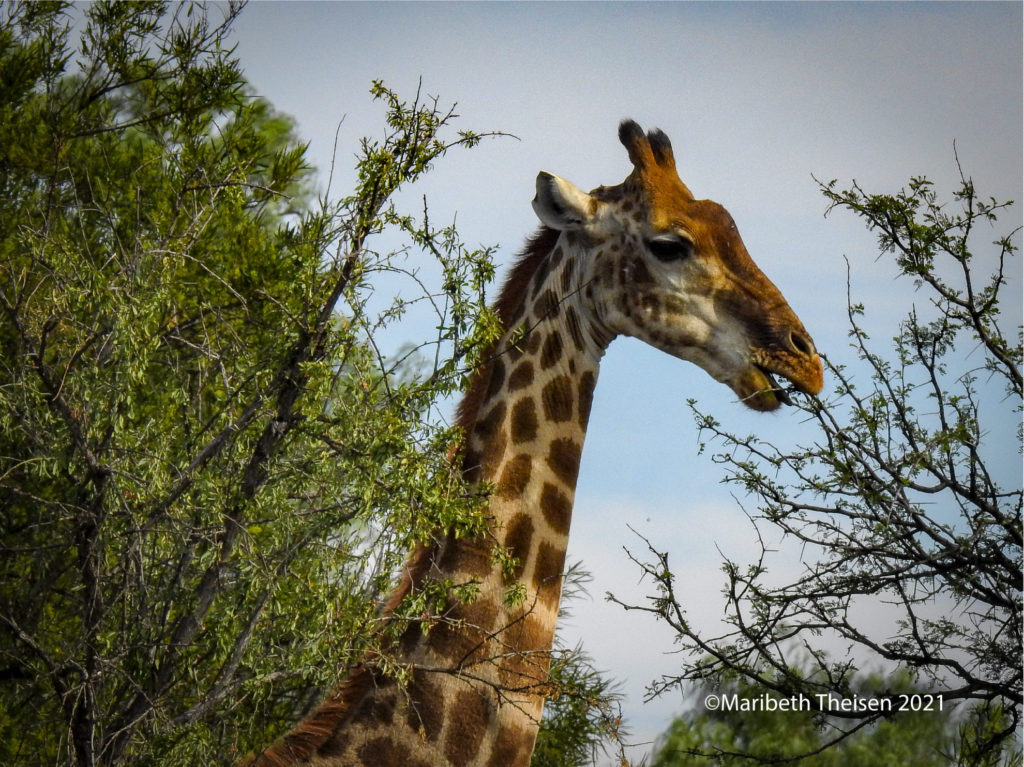
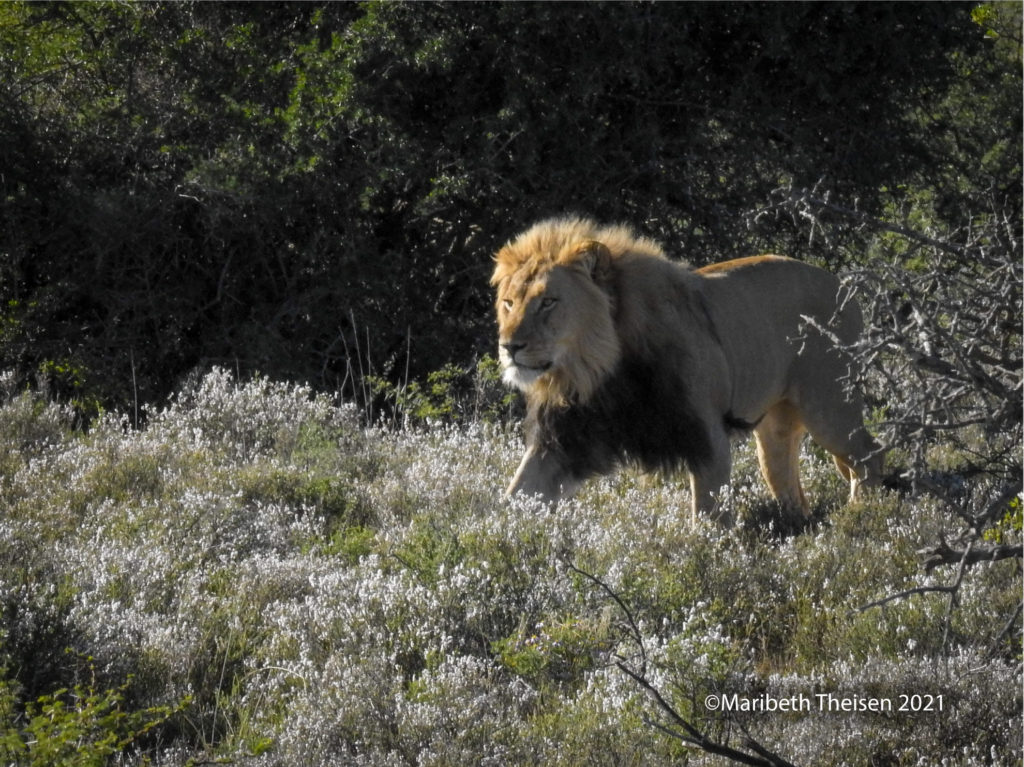
I am horrified. Does the rest of the world have my romantic notions of the African continent, teeming with savage animals that have never seen a human being? What has humanity done to this planet, that its creatures no longer live as they did for millennia, when we lived in harmony with nature? Is it too late to repopulate the planet with fauna? Can we coexist?
Yes, there are still some areas where wildlife roam without restriction. But in South Africa, as in many African countries, they are kept on reserves for their protection from poachers and further human encroachment. The idea is to give them the space and safety to wander, hunt (and be hunted), play, and raise their families.
Even more alarming: there are also privately owned ‘reserves’ that exist for the pleasure of hunters! How is it still possible? In fact, we have driven through an eerily quiet private hunting reserve, through electronic fences with barbed wire, to get to one with an amazing track record for conservation.
I am at Mount Camdeboo in the vast Karoo region of the Eastern Cape, a reserve of 300,000 acres, with majestic mountains and vast valleys extending as far as the eye can see. I don’t think the elephants who have been avoiding us have a clue that they are fenced in. While one member of the herd wears a tracking bracelet so the herd can be monitored, they are otherwise wild and in fact we narrowly miss having our vehicle turned over by the protective matriarch who charges us, her ears extended out to each side, her trumpeting trunk stretched toward us. That is the second charging animal I haven’t photographed. The last time it was because the charging silverback gorilla in Uganda terrified me to the point that I froze. This time, I am determined to get the shot and jokingly berate the driver who has floored the vehicle to get out of the way of the startled elephant.
I have dreamed of visiting the Dark Continent since I was 8 years old, when I began my love affair with animals. Decades later, I am finally here!
I have joined a team from Africa-Media to document Mount Camdeboo’s efforts toward cheetah conservation in Africa. And what a complex task it is! I am delirious with excitement, as I have always idolized big cats. I identify and marvel at the way they can be loving one moment, aggressive the next, then filled with boundless playfulness.
Camdeboo Mountain Reserve had two female cheetahs and successfully imported two males from a UK Zoo to mate with them. The brothers, Saba and Nairo had been separated as kittens because Saba had organ failure and had to be removed from the cheetah exhibit. They were reunited with one another and returned to Africa in order to bring their precious DNA to the limited gene pool. It is estimated that there are only 200 cheetahs roaming freely on the continent. Mount Camdeboo was lucky to get them. a specialist who is an expert in Cheetah in Africa, Leslie Slabbert, successfully re-wilded them and they were able to be released in the reserve. Because they hadn’t fought lions before, the reserve kept the lions in the lowlands and moved the brothers to mountains, building miles and miles of fence to separate and therefore, protect them. While most cheetahs bring down smaller game, these boys weren’t told that and therefore go after large game—Kudu and Nyala. The team is very proud of them. Leslie lives alone in a house up in the mountains and tracks the cheetahs’ behavior and health to ensure their survival. I cannot fathom how the world has gotten to the point that, in the eleventh hour, creatures have to be imported and rewilded to save their species. I am equally fascinated by the challenges the animals and workers have surmounted towards that end.
The plan was for the Saba and Nairo to aimpregnate the 2 females and start a new genetic lineage…
But enter Thaba, a truly wild Cheetah in Africa. He managed to crawl under a fence previously dug by warthogs. The team suspects he wandered over the mountains from Botswana, where African cheetahs and other animals still roam freely. Thaba fought with the brothers and ended up mating with both females who gave birth: Good for the gene pool and not so good for the original plan. Thaba was darted and put into a Boma, a large enclosure to acclimate him to the lowlands. When ready for release, he will be darted and collared so he can be tracked, then released. The wildlife experts on the continent will probably loan him out to beef up the gene pools on other reserves, thus conserving African cheetah populations for the future. I am floored by what a massive management issue and commitment this is! I admire the team’s efforts but pity the poor creature who will alternate between hunting on the reserve and being shipped elsewhere. How have we come to this?
Both Saba and Nairo attempted to kill Thaba’s cubs but the protective mothers successfully protected them. Fingers crossed, the brothers seem to be accepting the cubs now. Their lives and the future of the species hang in the balance.
Our visit is well-timed: We are lucky to witness and chronicle Thaba’s pre-release. We meet early in the morning with Leslie, wildlife veterinarian Keith Ross, Ecologist Penny Pistorius, and Mount Camdeboo’s Ulrich Schutte while they strategize. We learn about the collaring process and inspect the collar, antenna, and radio that will be used to follow Thaba’s movements when he is released. When I see Ulrich and Keith drive off with the dart rifle, I am equally sobered and excited—it begins to feel quite real! On the one hand, I feel empathy and sadness for Thaba who knows nothing of what is happening, nor why. Is his quality of life to be sacrificed for the good of his species? On the other hand, I am thrilled to be a part of a truly rare event in wildlife conservation.
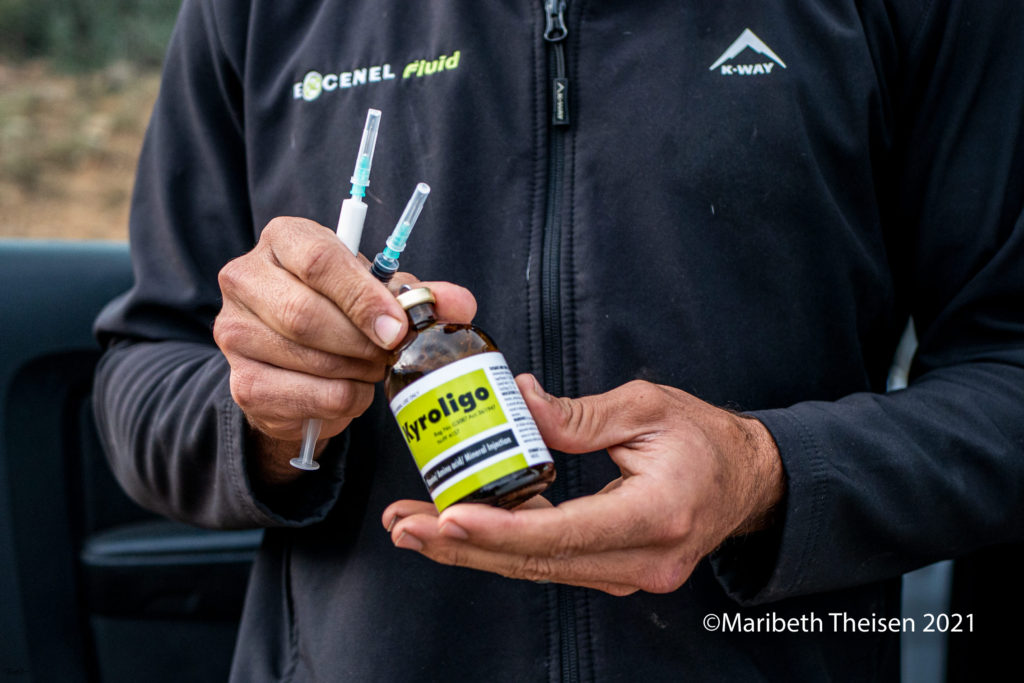
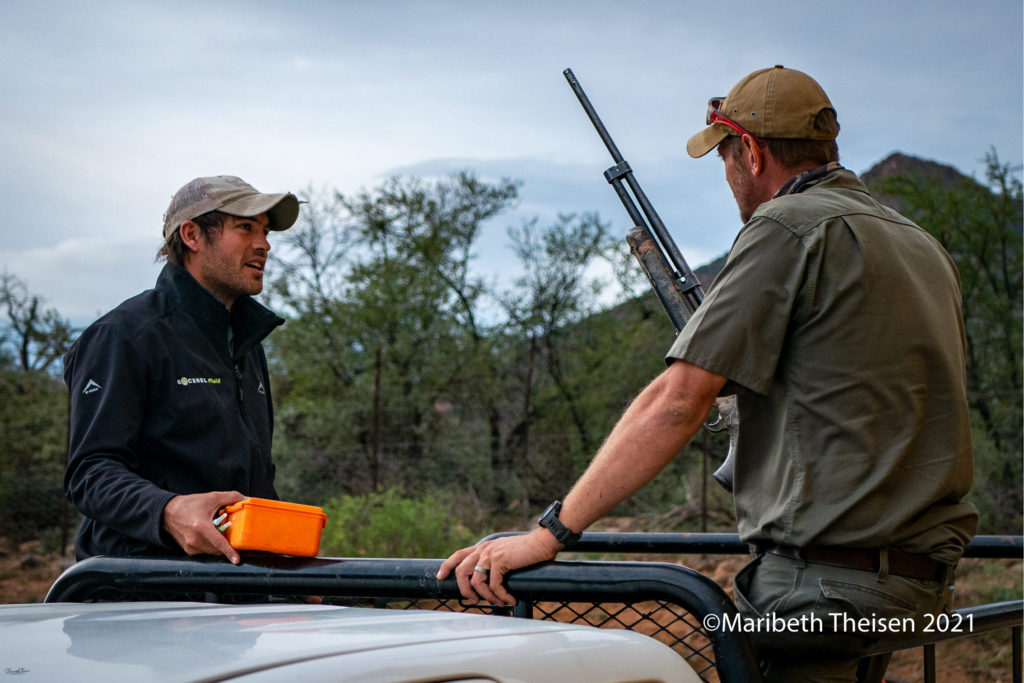
The team precedes us to ensure Thaba is safely asleep before we are invited to enter and photograph the procedure. The cheetah in Africa lies motionless, surrounded by the Mount Camdeboo team as our team approaches. The feline’s hip displays a crimson mark where the dart made contact. Syringes, the collar and tools lie nearby.
We begin taking photographs as the temporary collar is cut away and the new collar is fitted and secured. Leslie attentively shields Thaba’s open eyes from sunlight and dust, while Keith and Ulrich work with various hand tools.


The team inspects Thaba’s teeth and examines his body for injuries. The cheetah in Africa is in excellent health. It is during this process that we are educated about the differences between African cheetahs and other big cats. I’m fascinated to learn that cheetahs don’t have retractable claws, which become worn down by running and climbing; only the dew claw is sharp enough to to rip through the hides of their prey. Their bones are less dense, which is why they are the fastest sprinters on the planet. Unlike heavier predators with round tails, cheetahs have oval shaped tails to help them maneuver aerodynamically to keep themselves connected to thrashing prey. I have a couple of seconds to feel Thaba’s tail and realize I can’t call to mind any other animal that has an oval tail. What an amazing creature; so perfectly adapted for its unique niche.
The Africa-Media team leaves the Boma while the cheetah team stands back to monitor Thaba as he awakens. He continues to lie motionless. They tell us he is more sensitive to the medication than some other animals; last time he was darted it took him awhile to wake up. While there is currently no concern, we understand that in general, it is dangerous for the health of any creature to be under the influence of such powerful medication for too long. I feel a niggle: what if he doesn’t wake up?
The medical team drives back into the boma and Penny bangs on the side of the truck. The sound does not result in awakening Thaba. She gets out and tickles his sensitive ear; there is still no movement. We quietly wait on. pins and needles.
Eventually Thaba stirs and furiously lunges. I breathe a sigh of relief! The team leaves him to awaken in peace. He will be released tomorrow after resting and consuming a nice dinner of wildebeest hind quarter.
Now we begin the long drive into the mountains to look for Saba and Naisa, who are very much awake. Will we find them?
My thoughts return to Thaba. What if he had wandered onto a farm? Not so long ago, he would have been shot for exploring areas developed by people. I recognize that the reserves are now their only hope.
Once we let ourselves through the gate to the upper country, Leslie turns on the receiver. Periodically he asks the driver to stop while he walks, turning this way and that with the antenna. I giggle to myself: Is this modern or antiquated technology?
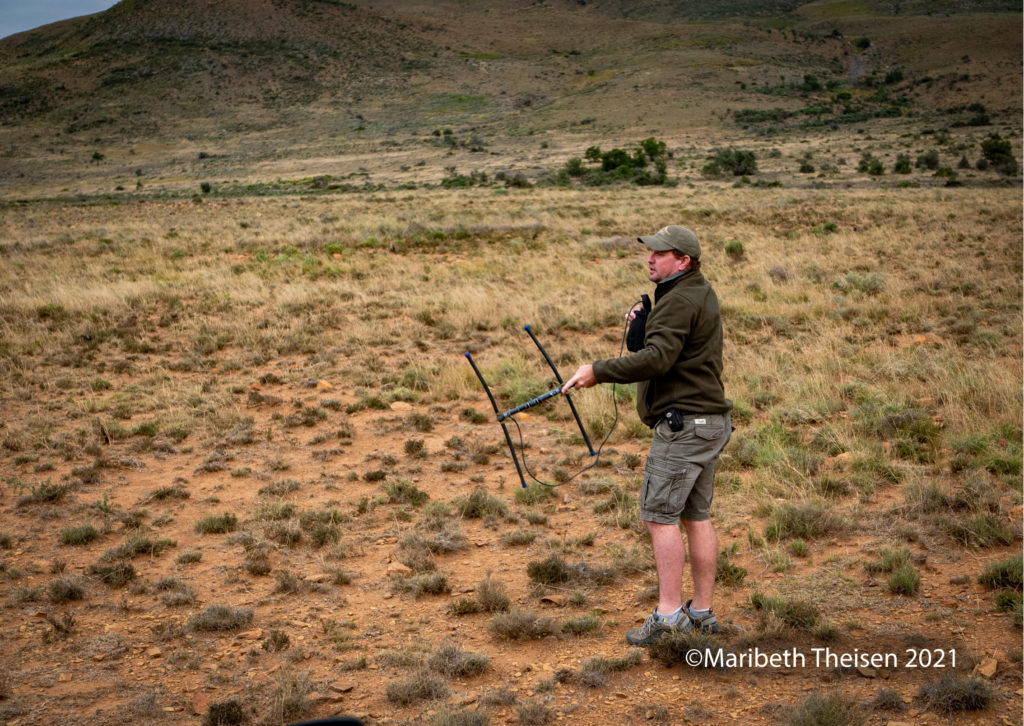
Eventually, he is satisfied that we are near. He briefs us on how to behave: walk single file, stay behind him and close to each other, stay quiet, don’t make sudden movements. If they behave in a threatening manner, stand your ground but never, ever run. I feel my heart quickening. This is it: my face-to-face encounter with wild cheetahs in Africa!

We snake our way over hills and through dry creek beds about a kilometer/third-of-a-mile, silently marching behind Leslie like baby ducks. He stops just over the rise to a vast plain (did you know cheetahs prefer running on flat land?) and explains he will talk to them as is his custom to settle them. He speaks softly and eventually my eyes make them out, camouflaged as they lie in the grass.

He instructs us to always keep him physically between us and the brothers and allows us to begin taking photos. I am awed that I am participating in a moment very few people are afforded.
It isn’t exactly as I dreamed. I thought I would encounter animals raised by their mothers in the wild, not rewilded zoo animals. I feel excited, nonetheless. The cheetah in Africa is magnificent!
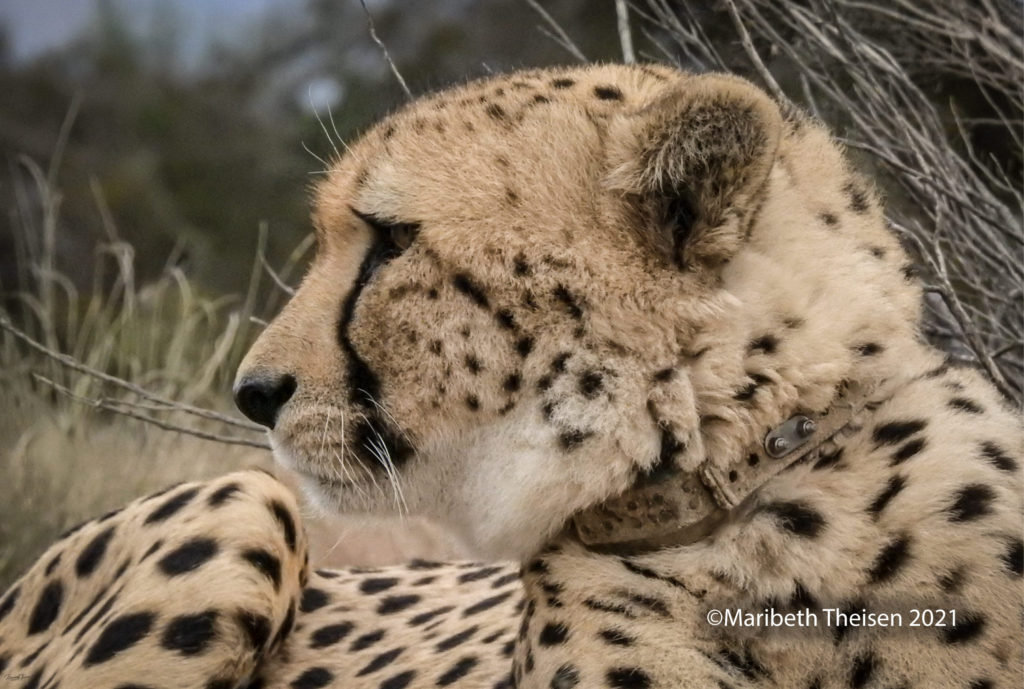
Leslie tells us he can see that they have recently eaten as their bellies are full; they look healthy and content, so he is satisfied they are doing very well. Because I am thoroughly absorbed in the experience I could stay all day, but Leslie admonishes us we must give them their space.
As we quietly make our way back, I begin to process both my incredible joy and the significance of this encounter. Once in the vehicle, we chatter with excitement about the experience. I am overwhelmed with excitement, as well as the weightiness of this adventure and the overall magnitude of conservation efforts.
I thought this trip would check off an item on my bucket list but didn’t realize it would spark a passion for wildlife conservation. I now aspire to become involved and also to sensitize others to its importance and relevance. If more of us become aware of how dire these issues are, perhaps we will save these creatures after all. Perhaps future generations will see wilder animals than these.
I want to contribute my time and efforts to this end. Do you?
UPDATE on Thaba: As of this writing, Thaba was relocated to Rietvlei Nature Reserve in Pretoria, South Africa. In two months, he will be sent to India.

